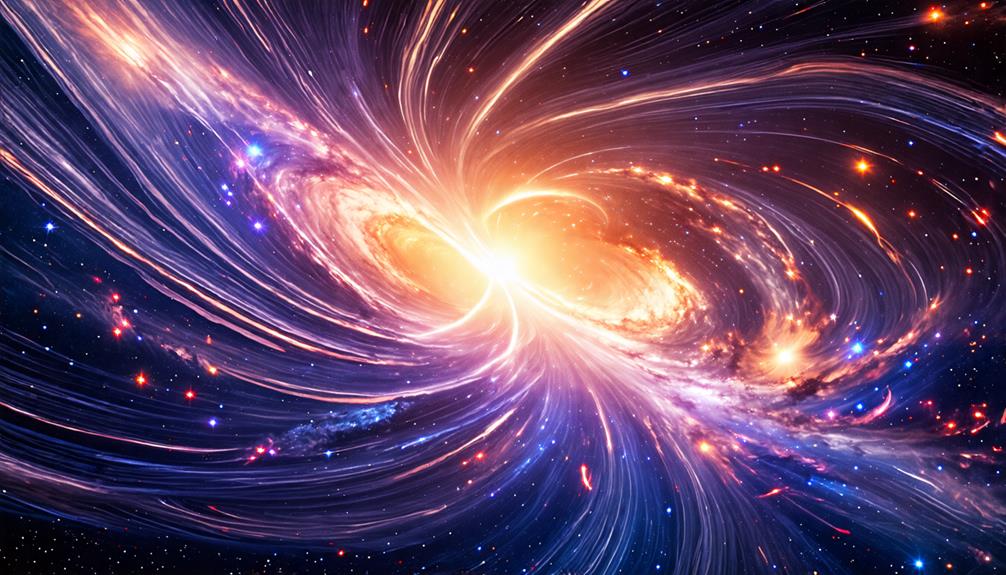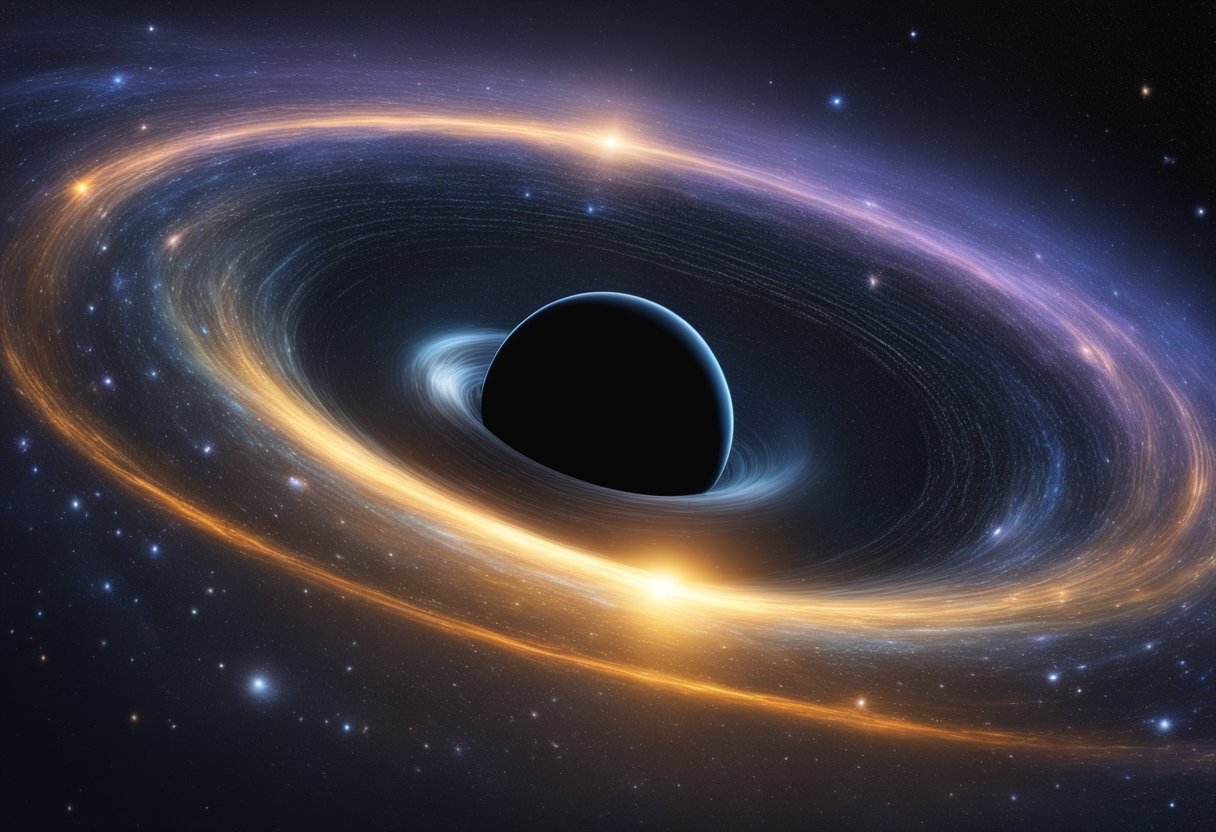Unraveling the Mystery of the Great Attractor: The Cosmic Force Pulling Our Galaxy

The Great Attractor, a massive gravitational anomaly situated 250 million light-years away, exerts its influence not only on our Milky Way but also on numerous nearby galaxies. This enigmatic force draws them toward a region abundant with dark matter and galaxy clusters, prompting questions about the universe's structure. As this cosmic phenomenon challenges our understanding of dark matter and the universe's expansion, what secrets might this gravitational pull reveal?
The Great Attractor Explained
The Great Attractor is a substantial gravitational anomaly exerting a powerful pull on the Milky Way and nearby galaxies, causing them to move at extraordinary speeds. Situated approximately 250 million light-years away in the Centaurus constellation, this enigmatic force influences the galaxies within our Local Group, drawing them at velocities exceeding 1 million miles per hour.
Comprising clusters of galaxies, intergalactic gas, and dark matter, the Great Attractor is located in the Zone of Avoidance, a region shrouded in dust and gas that complicates direct optical observations. This gravitational anomaly is thought to have a mass around 10^16 solar masses, highlighting its significant impact on the surrounding cosmic landscape.
Current research employs advanced observational technologies to probe the true nature of the Great Attractor. A critical aspect of this research is understanding the roles of dark matter and dark energy in shaping cosmic dynamics. By unraveling this mystery, scientists aim to gain deeper insights into the fundamental forces governing our universe.
Cosmic Forces at Work

Gravitational forces from the Great Attractor significantly influence the movement of galaxies, shaping the dynamics of our universe. Located approximately 250 million light-years away, this immense gravitational pull affects the Milky Way and its neighboring galaxies, causing peculiar motions that astronomers continuously analyze. The Great Attractor is estimated to contain around 10^16 solar masses, demonstrating its power over cosmic structures.
As you investigate the cosmos, you'll see how these gravitational forces contribute to large-scale structures like the cosmic web. This web comprises interconnected galaxies and clusters, all intricately linked by the gravitational pull of the Great Attractor. The dynamics of these galaxies reveal how they interact and adapt within this cosmic framework.
While dark matter significantly amplifies the effects of the Great Attractor, it remains an invisible force in astronomical research. Understanding how dark matter influences gravitational forces will reveal more mysteries of our universe. Current studies aim to unravel these complex interactions, enhancing our grasp of cosmic expansion and the ultimate fate of galaxies.
Dark Matter's Role

Dark matter plays a crucial role in shaping the gravitational dynamics around the Great Attractor, significantly influencing the motion of nearby galaxies. Its massive gravitational presence is essential for understanding the structure and behavior of our universe. Here are three significant ways dark matter impacts the Great Attractor:
- Amplifying Gravitational Pull: The distribution of dark matter around the Great Attractor enhances its gravitational influence, affecting the motion of galaxies within the Local Supercluster.
- Shaping Cosmic Structures: Dark matter influences the formation and evolution of cosmic structures, determining how galaxies cluster and interact over time.
- Obscured Presence: Much of the dark matter's concentration remains hidden, obscured by the Milky Way's dust, complicating direct observation of its effects.
Dark matter constitutes about 85% of the universe's total mass, playing a critical role in the gravitational dynamics of the Great Attractor. Understanding its distribution is fundamental for unraveling the mysteries surrounding the motion of galaxies and their interactions within the cosmos. As scientists continue to study dark matter's properties, we move closer to comprehending the universe's grand design.
Research and Discoveries

Exploring the Great Attractor has led to groundbreaking revelations that deepen our understanding of cosmic structures and their interactions. Located approximately 250 million light-years away in the Centaurus constellation, the Great Attractor exerts a significant gravitational influence on the Milky Way and nearby galaxies, pulling them toward it at astonishing speeds. Research indicates that this phenomenon is part of the larger Laniakea Supercluster, emphasizing the interconnectedness of cosmic structures.
However, studying the Great Attractor is challenging. The Zone of Avoidance, filled with the Milky Way's dust and stars, complicates direct observations. To overcome these challenges, scientists use advanced technologies like radio and X-ray telescopes. These tools help uncover the mysteries of the Great Attractor's composition and its role in the dynamics of the universe.
Recent findings also suggest a link between the Great Attractor and dark matter, proposing that dark matter may drive the motion of galaxies in its vicinity. As research progresses, our understanding of the Great Attractor's gravitational influence and its implications for our cosmic neighborhood will continue to strengthen.
Implications for Cosmology

The Great Attractor's immense mass presents significant challenges to our understanding of cosmic expansion and the formation of large-scale structures in the universe. Its gravitational influence markedly affects nearby galaxies, including our Milky Way, reshaping the cosmic web and altering galactic trajectories. This leads to several crucial implications for cosmology:
- Revisiting Dark Matter Theories: The gravitational impact of the Great Attractor may necessitate revisions to our theories about dark matter and its role in cosmic evolution.
- Understanding Cosmic Expansion: Analyzing its gravitational effects aids in comprehending the dynamics of the universe's expansion, potentially revealing whether it is accelerating or decelerating.
- Insights into Large-Scale Structures: Studying the Great Attractor enhances our understanding of the universe's large-scale structure, offering clues about the fundamental forces at play.
As astronomical research continues to explore the mystery surrounding the Great Attractor, it could lead to groundbreaking advancements in our comprehension of the universe's fate and the intricate interactions among galaxies. By investigating this cosmic phenomenon, we deepen our knowledge of how these elements interact, ultimately enriching the field of cosmology.
Conclusion
In summary, the Great Attractor is not merely a cosmic curiosity but a significant force influencing our galaxy's trajectory through the universe. Investigating its gravitational pull uncovers the mysteries of dark matter and the fundamental structure of cosmic dynamics. As research continues to shed light on this enigmatic region, we gain deeper insights into the universe's expansion and our place within it. Embrace the adventure of exploration, as the cosmos has much more to reveal.




